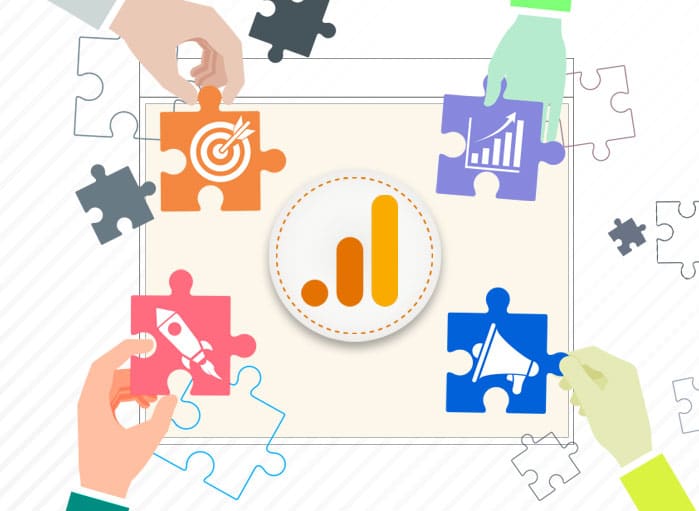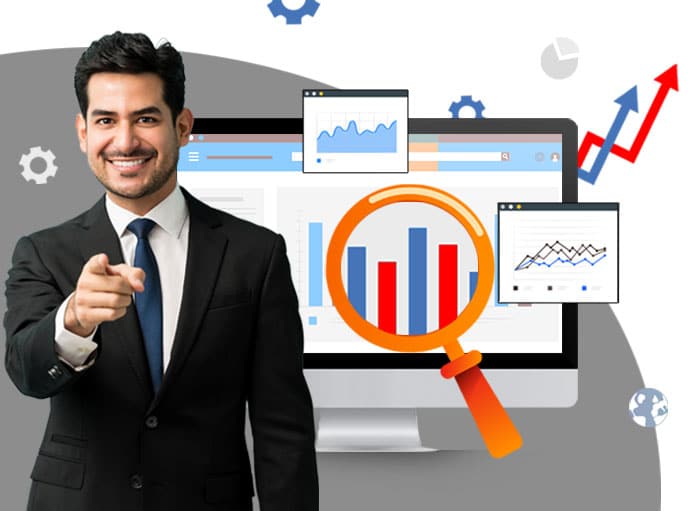
Upgrade to Google Analytics GA4: Unlock the Future of Data Analysis
Tags: GA4,Google Analytics


The world of digital marketing is evolving rapidly, and staying ahead of the curve is essential for success. One tool that has become a staple for businesses and marketers alike is Google Analytics. In this article, we’ll explore why you should upgrade to Google Analytics GA4, the latest version of this powerful platform. We’ll cover the benefits of making the switch and provide a step-by-step guide to upgrading your account seamlessly.
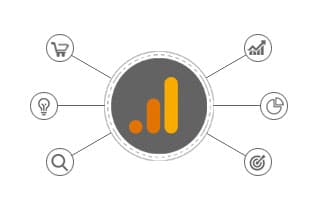
New Era in Analytics: Google Analytics GA4
As technology evolves, so too must our methods of analysing and interpreting data. Google Analytics GA4 is the next-generation analytics platform that builds upon the legacy of Universal Analytics. With a focus on user-centric reporting and data-driven insights, GA4 is designed to help businesses understand their audience better, optimize their marketing strategies, and ultimately drive growth.
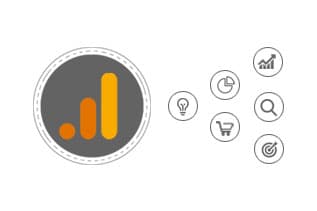
Key Advantages of Upgrading to GA4
To help you make an informed decision about upgrading to GA4, let’s delve into the key advantages that this powerful analytics platform offers, setting it apart from its predecessor, Universal Analytics.
1. Improved Data Collection and Integration
One of the main reasons to upgrade to GA4 is its enhanced data collection and integration capabilities. GA4 uses an event-based model, making it easier to track user interactions across various platforms and devices. This flexibility ensures you have a more accurate and complete picture of your audience’s behaviour, enabling you to make data-driven decisions.
2. Enhanced Analysis and Reporting Capabilities
GA4 offers powerful new analysis and reporting features that help you gain deeper insights into your audience. With improved segmentation and advanced filters, you can easily identify trends and patterns in user behaviour. GA4 also offers new, customizable reports, allowing you to build and visualize the data that matters most to your business.
3. Advanced Machine Learning Features
Leveraging Google’s machine learning capabilities, GA4 can predict user behaviour and generate valuable insights. These features allow you to identify potential revenue opportunities, high-value audiences, and trends in customer behaviour. With GA4’s machine learning, you can stay ahead of the curve and adapt your marketing strategies to drive success.
4. Future-Proofing Your Analytics
As Universal Analytics is gradually phased out, upgrading to GA4 ensures that your analytics platform remains current and capable of handling future updates. By making the switch now, you can ensure a smooth transition and continue to benefit from new features and improvements as they are rolled out.
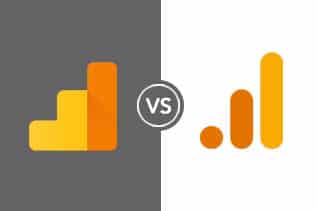
Key Differences Between Universal Analytics and Google Analytics GA4
As you transition to GA4, it’s essential to understand the key differences between this new platform and its predecessor, Universal Analytics. This section highlights the most significant changes and improvements that GA4 brings to the table.
1. Data Collection Model
Universal Analytics uses a session-based model, while GA4 uses an event-based model. This fundamental shift in data collection makes GA4 more flexible and allows for better tracking of user interactions across different platforms and devices.
2. User-Centric Reporting
GA4 places a greater emphasis on user-centric reporting, focusing on how individual users interact with your website or app over time. This approach provides a more accurate and complete picture of your audience’s behaviour, making it easier to tailor your marketing strategies.
3. Cross-Platform Tracking
GA4 is designed to facilitate cross-platform tracking, allowing you to track user behaviour across web, iOS, and Android platforms within a single property. This feature simplifies data analysis and provides a unified view of user interactions across multiple touchpoints.
4. Enhanced Measurement
GA4’s Enhanced Measurement feature automatically tracks key user interactions, such as scrolls, clicks, and video engagement, without the need for manual configuration. This makes it easier to capture valuable data and gain insights into user behaviour.
5. Advanced Analysis Techniques
GA4 offers new analysis techniques, such as Exploration, Path analysis, and Funnel analysis, that provide deeper insights into user behaviour and help identify trends and patterns. These advanced tools enable you to make more informed decisions and optimize your marketing strategies.
6. Machine Learning Capabilities
Leveraging Google’s machine learning capabilities, GA4 can predict user behaviour and generate valuable insights. These features allow you to identify potential revenue opportunities, high-value audiences, and trends in customer behaviour, helping you stay ahead of the curve and adapt your marketing strategies to drive success.
7. Customizable Reports
GA4 allows for greater customization of reports, enabling you to build and visualize the data that matters most to your business. With improved segmentation and advanced filters, you can easily identify trends and patterns in user behaviour.
In summary, GA4 offers a significant upgrade over Universal Analytics, with its event-based data collection model, user-centric reporting, cross-platform tracking, enhanced measurement features, advanced analysis techniques, machine learning capabilities, and customizable reports. By understanding these key differences and taking advantage of the new features offered by GA4, you can unlock the full potential of this next-generation analytics platform and drive growth for your business.

Potential Dangers of Not Updating to Google Analytics GA4
While GA4 brings a wealth of benefits and improvements over Universal Analytics, you might wonder about the potential dangers of not making the upgrade. Here are some risks and drawbacks you may face by choosing not to update to GA4:
1. Loss of Feature Updates and Support
As Google focuses on the development and improvement of GA4, it is likely that Universal Analytics will receive fewer updates and eventually become obsolete. By not updating to GA4, you may miss out on new features, enhancements, and support, potentially putting your analytics efforts at a disadvantage compared to competitors who have made the switch.
2. Inaccurate or Incomplete Data
GA4’s event-based data collection model and cross-platform tracking capabilities provide a more accurate and complete picture of user behaviour. By not upgrading to GA4, you risk relying on incomplete or outdated data, which could lead to less informed decision-making and less effective marketing strategies.
3. Limited Analysis Capabilities
As mentioned earlier, GA4 offers advanced analysis techniques and machine learning capabilities that are not available in Universal Analytics. By not updating, you lose access to these powerful tools, which could limit your ability to gain deep insights into user behaviour and optimize your marketing strategies.
4. Inefficient Tracking and Reporting
GA4’s Enhanced Measurement feature simplifies the tracking of key user interactions and provides more comprehensive reporting. By sticking with Universal Analytics, you may need to invest additional time and resources into manual tracking and configuration, making your analytics efforts less efficient.
5. Difficulty Adapting to Future Changes
As technology and digital marketing continue to evolve, the need to adapt to new trends and developments becomes increasingly crucial. By not updating to GA4, you risk falling behind in the rapidly changing world of analytics and may face a more challenging transition when it eventually becomes necessary.
6. Missing Out on Potential Revenue Opportunities
With its advanced machine learning features, GA4 can help you identify potential revenue opportunities, high-value audiences, and trends in customer behaviour. By not upgrading, you may miss out on these valuable insights, potentially limiting your business’s growth and profitability.
In conclusion, while not updating to GA4 may not have immediate consequences, the long-term risks and drawbacks could hinder your analytics efforts and limit your business’s growth potential. By embracing GA4 and its next-generation features, you can ensure that your analytics platform remains current, efficient, and capable of driving success in an ever-evolving digital landscape.

Upgrading to Google Analytics GA4: A Step-by-Step Guide
After exploring the benefits and differences between Universal Analytics and GA4, it’s time to make the switch and upgrade your analytics game. In this section, we will provide a detailed, step-by-step guide to help you upgrade to GA4 with ease and confidence.
1. Setting up a GA4 Property
To get started with GA4, you’ll need to create a new GA4 property in your Google Analytics account. Follow these steps:
- Sign into your Google Analytics account.
- Click on “Admin” in the lower-left corner.
- In the “Account” column, choose the account where you want to create the GA4 property.
- In the “Property” column, click on “Create Property.”
- Select “Google Analytics 4” and click “Next.”
- Fill in the required information and click “Create.”
2. Configuring Data Streams
Data streams in GA4 allow you to track user behaviour across different platforms (web, iOS, and Android). To configure data streams, follow these steps:
- In your GA4 property, click on “Admin” in the lower-left corner.
- In the “Property” column, click on “Data Streams.”
- Choose the appropriate platform (Web, iOS, or Android) and click “Add Stream.”
- For Web: Enter your website URL and stream name, then click “Create Stream.” For iOS and Android: Fill in the required app information and click “Register App.”
- Copy the generated tracking code or SDK configuration details and implement them on your website or app, as appropriate.
3. Implementing Enhanced Measurement
GA4’s Enhanced Measurement feature automatically tracks key user interactions on your website, such as scrolls, clicks, and video engagement. To enable Enhanced Measurement, follow these steps:
- In your GA4 property, click on “Admin” in the lower-left corner.
- In the “Property” column, click on “Data Streams.”
- Click on the data stream you want to configure Enhanced Measurement for.
- Toggle on the “Enhanced Measurement” switch.
- Customize the events you want to track by toggling individual switches on or off.
- Click “Save.”
4. Customizing Reports and Analysis
To make the most of GA4’s reporting and analysis features, take the time to explore and customize the available options:
- Navigate to the “Reports” tab in your GA4 property.
- Explore the available reports, such as “Realtime,” “User Acquisition,” “Engagement,” and “Monetization.”
- Click on “Customize report” to modify existing reports or create new ones tailored to your business needs.
- In the “Analysis” tab, experiment with the available techniques, such as “Exploration,” “Segmentation,” and “Funnel Analysis,” to gain deeper insights into your data.
5. Transitioning Data from Universal Analytics
While GA4 is designed to work alongside your existing Universal Analytics property, you may wish to import some historical data to facilitate comparisons and maintain continuity. Follow these steps:
- In your Universal Analytics property, click on “Admin.”
- In the “Property” column, click on “GA4 Setup Assistant.”
- Click on “Get started” under “I want to import my Universal Analytics data into my GA4 property.”
- Select the GA4 property you want to import data into and click “Confirm.”
- Review the imported data settings and click “Start data import.”
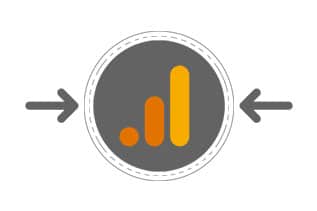
Embrace the Future of Analytics with Google Analytics GA4
In today’s competitive digital landscape, staying ahead of the curve is essential for success. By upgrading to Google Analytics GA4, you’ll unlock the full potential of a next-generation analytics platform, equipped with advanced features and capabilities that will help you drive growth and profitability.
If you’re ready to make the switch to GA4 or need assistance with the transition, eWay Corp is here to help. Our team of experts can guide you through the process, ensuring a seamless upgrade experience that maximizes the benefits of this powerful analytics tool.
Don’t wait to harness the power of GA4. Contact eWay Corp today to start your journey towards a more efficient, effective, and data-driven future.

